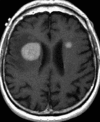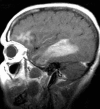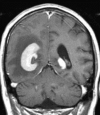Multimodality imaging of primary CNS lymphoma in immunocompetent patients
- PMID: 24646184
- PMCID: PMC4067032
- DOI: 10.1259/bjr.20130684
Multimodality imaging of primary CNS lymphoma in immunocompetent patients
Abstract
Primary central nervous system lymphoma (PCNSL) belongs to the group of extranodal non-Hodgkin's lymphoma, and the management of the disease is radically different from other central nervous system neoplasms. Owing to its varied appearance on imaging, diagnosis of PCNSL can be challenging. The purpose of this pictorial review is to depict the brain findings of PCNSL during initial diagnosis in immunocompetent individuals. Multimodal imaging integrating advanced sequences can facilitate differentiation of PCNSL from other CNS neoplasms.
Figures

















References
-
- Watanabe M, Tanaka R, Takeda N, Wakabayashi K, Takahashi H. Correlation of computed tomography with the histopathology of primary malignant lymphoma of the brain. Neuroradiology 1992; 34: 36–42. - PubMed
Publication types
MeSH terms
Grants and funding
LinkOut - more resources
Full Text Sources
Other Literature Sources

